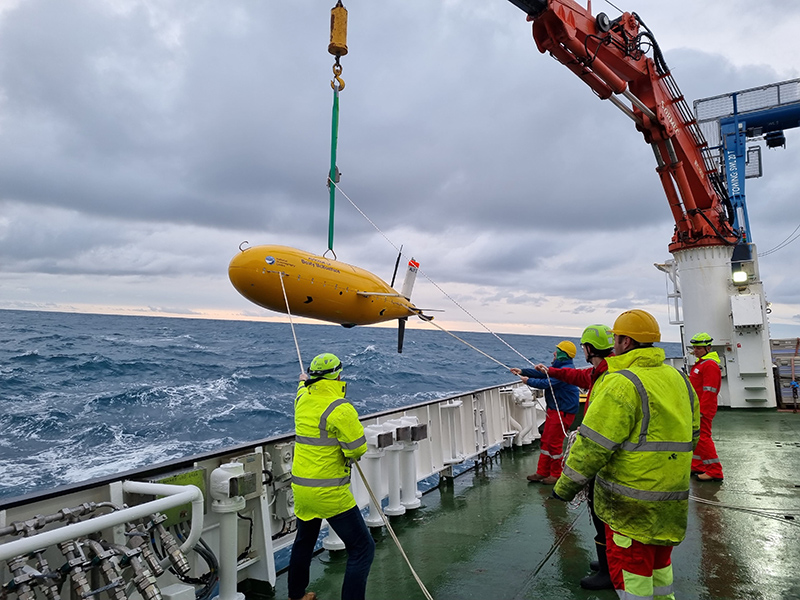Principal Investigator: Prof. Mark Moore, University of Southampton
Summary

Using a combination of ship-based, robotic and satellite platforms, the IDAPro project will improve our understanding of the productivity of phytoplankton, which are ultimately responsible for storing significant amounts of carbon in the ocean.
Our project aims to deliver a new understanding of the interactive drivers of oceanic net primary production (NPP) and associated ecosystem controls on the coupling of nutrient use to ocean carbon uptake through net community production (NCP).
This understanding will help reduce uncertainty in future predictions of NPP and ecosystem changes and therefore quantification of NCP and carbon storage in a warming ocean.
Impact
Data from our observations and experiments will allow us to establish key drivers of the magnitude and seasonal changes in primary production and link these to the overall controls on the efficiency of ocean carbon storage across a broad region of the North Atlantic Ocean.
In addition to providing new understanding, our research will generate improved data on rates of phytoplankton growth and loss, providing more rigorous constraints for numerical models and hence pointing the way towards more confident predictions of future primary production and carbon cycle responses to climate change.
Background
The open ocean ecosystems which dominate the surface of our planet are all dependent on the generation of new organic matter by single celled organisms which are collectively termed phytoplankton. These organisms use light, nutrients, and carbon dioxide to grow through a process termed primary production. In addition to forming the base of the marine food web, the collective production by these organisms is ultimately responsible for ocean biology keeping atmospheric carbon dioxide levels around 30-40% lower than they would otherwise be, thus exerting a significant impact on global climate. Understanding how primary production may vary in the future is thus important for predicting the ongoing response of both ocean ecosystems and carbon cycling to climate change.
The abundance and activity of phytoplankton in the upper ocean is always a balance between growth rates (determined by the availability of resources) and loss rates including through grazing by organisms collectively termed zooplankton and mortality due to viruses and direct sinking. However, the factors determining both growth and loss dynamically vary both across the different regions of the ocean and throughout the annual cycle in complex and interacting ways. We currently try and capture the knowledge necessary to predict future changes in primary production using numerical models of these interacting processes. However, our current state-of-the-art models differ substantially in their predictions of future change due to the differing ways they represent a variety of these key processes. Our project thus aims to provide the necessary data constraints to chose between different models and hence refine predictions.